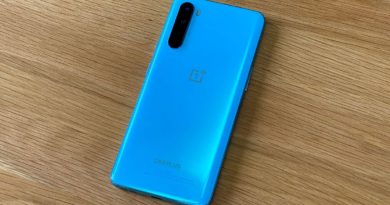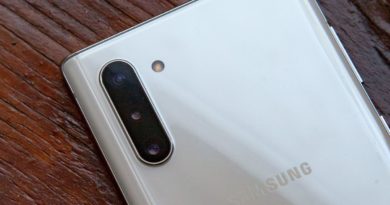T-Mobile and Sprint merger: Your questions answered
The T-Mobile-Sprint merger is finally completed, after a nearly two years of regulatory hearings, a lawsuit and pronouncements about what combining the nation’s third- and fourth-largest wireless carriers will mean for smartphone owners.
T-Mobile and Sprint announced that their merger was completed on April 1, after first unveiling the $26 billion deal in April 2018. Sprint is now part of what’s being billed as The New T-Mobile (though you can probably keep calling the carrier T-Mobile, and no one will be too confused).
The completion of the T-Mobile-Sprint merger is just one of the first dominoes to fall, as the U.S. wireless market figures to see substantial changes over the next few months. Here’s a quick summary of everything that’s happened so far and what we expect to see now that T-Mobile has absorbed Sprint.
What is the current status of the T-Mobile-Sprint merger?
It’s all done. The T-Mobile-Sprint merger closed April 1, meaning Sprint customers are now part of the T-Mobile family.
Here’s how we got to this point. T-Mobile and Sprint first announced plans to merge in 2018 and in the ensuing 23 months have spent their time winning approval from assorted regulatory agencies — chiefly the Federal Communications Commission and U.S. Department of Justice, both of whom had to sign off on T-Mobile and Sprint joining forces. Those federal agencies did, but only after extracting some promises from T-Mobile and Sprint meant to alleviate concerns about reduced competition in the wireless space, should those two carriers merge.
The most significant concession: T-Mobile and Sprint had to sell off some of their owned-and-operated subsidiaries to a third company that will become a new nationwide wireless carrier. That company is Dish, which is going to take over Sprint’s Boost Mobile business. (In February, Sprint folded its Virgin Mobile subsidiary into Boost in anticipation of handing off that business to Dish.) In addition, T-Mobile has to provide access to some of its wireless spectrum for a few year while Dish builds out its network.
A lawsuit filed by several state attorneys general attempted to block the deal over fears that it would hurt competition. But in February, a U.S. federal judge ruled in favor of letting the merger proceed, removing the last major hurdle to the T-Mobile-Sprint merger. In March, the California Public Utilities Commission — one of the last holdouts — issued a proposal to approve the merger. A final vote still needs to be taken, but things seem ironed out enough for the New T-Mobile to move forward.
If I’m currently a T-Mobile or Sprint customer, what will their merger do to my bill?
Nothing’s expected to change with your monthly cell phone plan, at least according to T-Mobile. In the process of trying to gain regulatory approvals, T-Mobile executives vowed that customers would have the same or better monthly rates for three years after the deal goes through.
Sprint’s website offers the same reassurance about current monthly rates. “There’s nothing you need to do today,” Sprint is telling customers. “Your current deal stays the same and you can manage your account just like before.”
As for what happens after those three years — or what happens if the New T-Mobile doesn’t keep its word — we’ll just have to wait and see.
T-Mobile has already launched a new plan called T-Mobile Connect that it’s touting as a low-cost prepaid cell phone plan. That plan offers 2GB of data for $15 a month, with a 5GB option available for $25. (Note that once you’ve used up your T-Mobile Connect data, you’re out of data until the next billing cycle rolls around.)
T-Mobile Connect was to have launched once the merger with Sprint was finished, but T-Mobile launched it early, citing the ongoing coronavirus pandemic.
What other changes has T-Mobile announced?
Other initiatives of the New T-Mobile include a plan to provide free broadband to 10 million low-income households with school-aged children. Eligible homes will be able to get five years of free home service offering 100GB of data per year. Another program involves a 10-year commitment to make unlimited talk, text and data free for first responders at every public and non-profit state and local police, fire and emergency services agency.
Oh, and there will be a change at the top for the New T-Mobile. John Legere, the outspoken CEO of T-Mobile, is leaving his post at the end of April. He’ll be succeed by chief operating officer Mike Sievert, which should mean less curse words during T-Mobile’s product announcements. Legere made the move official via a tweet on April 1.
What about 5G? How does the T-Mobile-Sprint merger impact the rollout of 5G in the U.S.?
Besides being in a better position to compete with Verizon and AT&T, T-Mobile and Sprint have framed their merger as a way to ramp up the expansion of 5G in this country. Certainly, the new carrier will be able to use its combined 5G spectrum to increase its reach and improve its performance.
Right now, T-Mobile has the largest 5G footprint of any U.S. carrier, covering 5,000 cities and 200 million people. But that network is built on low-band spectrum, which is only slightly faster than LTE, as we learned when testing a OnePlus 7T Pro 5G McLaren using T-Mobile 5G. T-Mobile does use faster millimeter wave technology in parts of seven cities, but it’s looking for a way to boost the speed of its 5G network.
That’s where Sprint and its midband spectrum enters the picture. While Sprint’s 5G network doesn’t quite reach the speeds of millimeter wave, our tests of Sprint’s 5G network have found that its faster than low-band networks like T-Mobile’s. And like T-Mobile, Sprint’s 5G coverage has an extensive reach.
Sprint launched 5G service in nine cities last year and added Miami in January, but it’s been in a holding pattern while it waited for its merger with T-Mobile to be resolved. Now that the companies are combined, we expect a more detailed view of how the New T-Mobile will build out its 5G coverage.


